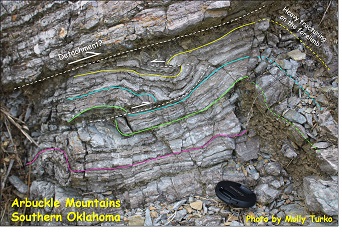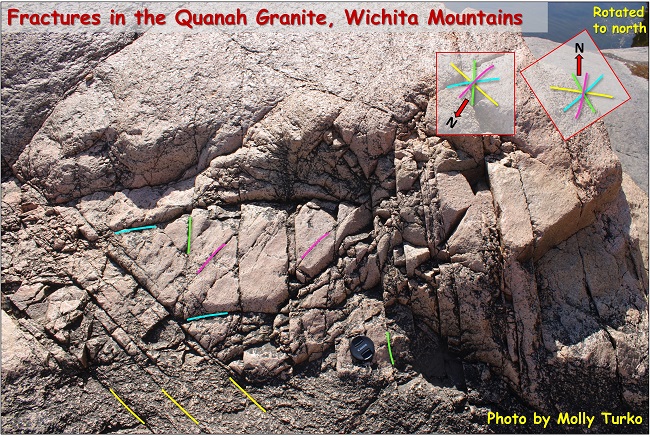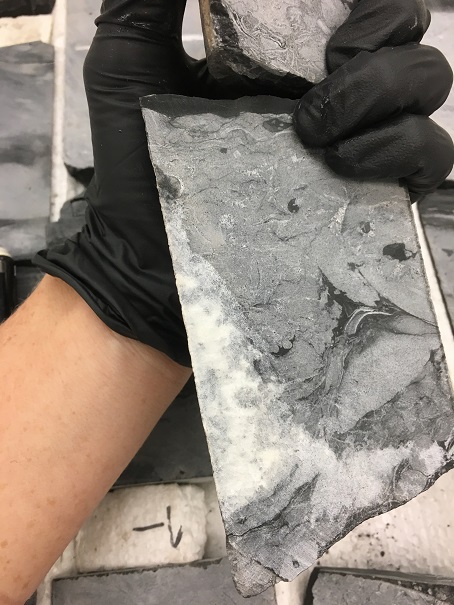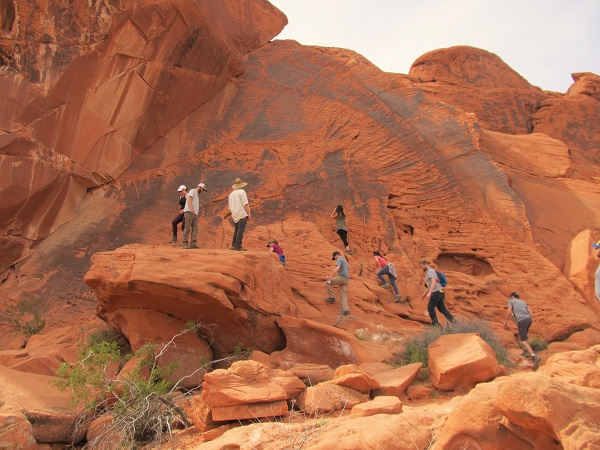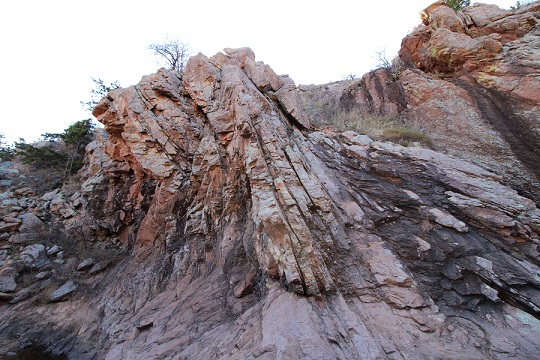
Structural Geology
Our team of structural geologists have a vast set of skills and backgrounds. While we are not limited, some examples are listed below. Our services can be customized to meet your needs, whether you are looking for a full interpretation or just some coaching and feedback on structural topics.
- Seismic Interpretation
- We have a unique and successful workflow of integrating the tectonic history, the mechanical stratigraphy, and appropriate analogs to interpret complex structural geology in seismic data. Seismic resolution may be challenged in areas of complex structural geology, understanding these topics is essential for a valid structural model.
- Our experts have experience in a variety of structural regimes including:
- Extensional rift basins
- Inverted rift basins, including transpressional inversion
- Thick-skinned contraction
- Fold and thrust belts
- Wrench faulting and strike-slip deformation
- Both contractional and extensional salt tectonics
- Basins with multiple phases of deformation
- Structure Maps
- Proper structure maps are essential for identifying traps, migration pathways, fault seal analysis, operational risks, and fractured areas. Our team can construct proper maps with the client’s data or provide coaching and feedback while working alongside geoscientists.
- Fracture Analysis (Core, Image Log, Outcrop)
- Fracture analyses in core have the potential to determine the impact of fracturing on a reservoir and the role of the mechanical stratigraphy on operations. A kinematic analysis may also provide insight to the tectonic environment during time of deformation. This information can also be coupled with image log interpretation which may also provide insight to current in situ stress conditions.
- Our experts are also available to do outcrop fracture studies which can provide the proper data for a DFN (Discrete Fracture Network) fracture model, or simply to get a better understanding of the fracturing in the subsurface.
- Fault and Fracture Modeling
- Numerical modeling can provide insight to stress perturbations around faults, which can aid in fracture predictability.
- Helpful for identifying fractured reservoirs related to faulting.
- Can be calibrated to in situ data to assess reservoir storage.
- Tectonic History Study
- Provide a report on the tectonic history of a basin or play area including an assessment on the mechanical stratigraphy and what kinds of structural styles to expect.
- Seismic resolution may be challenged in areas of complex structural geology, understanding these topics is essential for a valid structural model.
- Draft 3D Models of Structure and Reconstructions
- These aid in illustrating the tectonic history.
- They are great visualizations for investor presentations, particularly for those without a geology background.
- Cross Section Restoration and Balancing
- These can be essential for validating a structural cross section, particularly when targeting a structural trap within the cross section and/or identifying paleo migration pathways.
- Petroleum Systems Analysis from a Structural Geology Perspective
- Our geologists have a background in assessing the risk of a play/prospect related to structural geology concepts.
- These include assessing the trap, seal, and migration elements while considering both neo and paleo pressure/stress profiles.
- We can provide a risk value tailored to your company’s portfolio standards.
- Structural Domains
- Structural domains are areas of similar kinematics, scale, and orientation.
- These can apply to a single formation or to multiple formations in the stratigraphic section.
- They can be particularly helpful in large play areas where both the structural geology and the mechanical stratigraphy vary.
- Structural domains identified in previous studies were used to assess the operational impact of structural geology by highlighting areas where; well spacing needed to be increased, mud loss risk was higher, and where types curves needed to be adjusted based on enhanced fracturing in the reservoir.
- Basin Wide Stress Studies
- We can provide a map showing the orientation of maximum horizontal stress in a basin or play area which can be helpful for well planning and development.
- Datasets usually include image log data, dipole sonic log data, core data, microseismic, and/or earthquake data (moment tensor/focal mechanisms). Data usually includes both proprietary and public.
- Wellbore Stability Analysis from a Structural Geology Perspective
- We analyze the in situ stress data available alongside the expected fracture and fault trends, and mechanical stratigraphy, to determine if these attributes may or may not be causing the issues.
- Field Mapping and Structural Evaluation
- In many cases the structures observed at the outcrop are analogous to what is encountered in the subsurface.
- Our team of experts are happy to evaluate these structures and use the information to construct better subsurface models which may include the structural model, fracture models, and/or reservoir models.
- Consulting, Coaching, Mentorship, and/or Project Reviews
- Our friendly team of structural geologists are always happy to meet with team members and individuals in the company to assist with structural geology needs.
- Whether your team simply needs some structural geology coaching and mentoring, or if the team would simply like a second opinion on a structural project, we are here to meet your needs.
While we have your attention don’t forget to follow Dr. Turko’s video adventures in the field!
